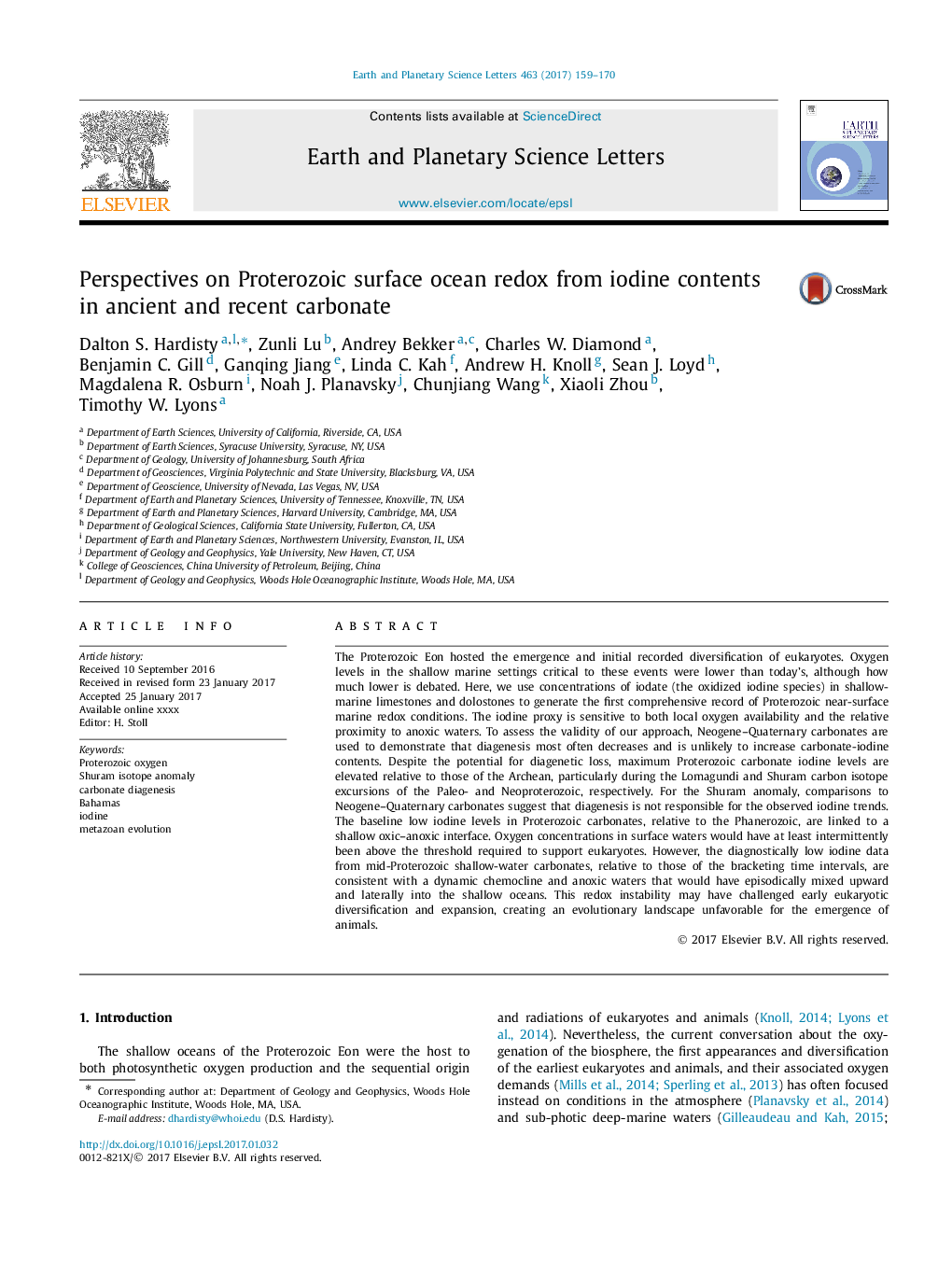| کد مقاله | کد نشریه | سال انتشار | مقاله انگلیسی | نسخه تمام متن |
|---|---|---|---|---|
| 5780100 | 1634693 | 2017 | 12 صفحه PDF | دانلود رایگان |
عنوان انگلیسی مقاله ISI
Perspectives on Proterozoic surface ocean redox from iodine contents in ancient and recent carbonate
ترجمه فارسی عنوان
دیدگاه ها در مورد اکسیداسیون سطحی پروتروزیو از محتوی ید در کربنات باستانی و اخیر
دانلود مقاله + سفارش ترجمه
دانلود مقاله ISI انگلیسی
رایگان برای ایرانیان
کلمات کلیدی
اکسیژن پروستروئوزوئیک، آنومالی ایزوتوپ شورام، دیانژن کربناته، باهاما ید، تکامل متازون،
موضوعات مرتبط
مهندسی و علوم پایه
علوم زمین و سیارات
علوم زمین و سیاره ای (عمومی)
چکیده انگلیسی
The Proterozoic Eon hosted the emergence and initial recorded diversification of eukaryotes. Oxygen levels in the shallow marine settings critical to these events were lower than today's, although how much lower is debated. Here, we use concentrations of iodate (the oxidized iodine species) in shallow-marine limestones and dolostones to generate the first comprehensive record of Proterozoic near-surface marine redox conditions. The iodine proxy is sensitive to both local oxygen availability and the relative proximity to anoxic waters. To assess the validity of our approach, Neogene-Quaternary carbonates are used to demonstrate that diagenesis most often decreases and is unlikely to increase carbonate-iodine contents. Despite the potential for diagenetic loss, maximum Proterozoic carbonate iodine levels are elevated relative to those of the Archean, particularly during the Lomagundi and Shuram carbon isotope excursions of the Paleo- and Neoproterozoic, respectively. For the Shuram anomaly, comparisons to Neogene-Quaternary carbonates suggest that diagenesis is not responsible for the observed iodine trends. The baseline low iodine levels in Proterozoic carbonates, relative to the Phanerozoic, are linked to a shallow oxic-anoxic interface. Oxygen concentrations in surface waters would have at least intermittently been above the threshold required to support eukaryotes. However, the diagnostically low iodine data from mid-Proterozoic shallow-water carbonates, relative to those of the bracketing time intervals, are consistent with a dynamic chemocline and anoxic waters that would have episodically mixed upward and laterally into the shallow oceans. This redox instability may have challenged early eukaryotic diversification and expansion, creating an evolutionary landscape unfavorable for the emergence of animals.
ناشر
Database: Elsevier - ScienceDirect (ساینس دایرکت)
Journal: Earth and Planetary Science Letters - Volume 463, 1 April 2017, Pages 159-170
Journal: Earth and Planetary Science Letters - Volume 463, 1 April 2017, Pages 159-170
نویسندگان
Dalton S. Hardisty, Zunli Lu, Andrey Bekker, Charles W. Diamond, Benjamin C. Gill, Ganqing Jiang, Linda C. Kah, Andrew H. Knoll, Sean J. Loyd, Magdalena R. Osburn, Noah J. Planavsky, Chunjiang Wang, Xiaoli Zhou, Timothy W. Lyons,
